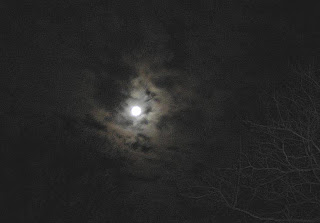Canadian Seal Hunts...
The Canadian seal hunt is the largest commercial hunt of marine mammals in the world. This annual hunt mainly takes place of the coast of Newfoundland and Labrador. According to Canadian law, harp seals may be killed once they are two weeks old. International Council for the Exploration of the Sea statistics indicate that nearly all of the 365.971 harp seals (97%) that were killed during the 2004 seal hunt were between two weeks and three months old. Aside from the Canadian hunt, harp seals are also hunted in Greenland, Norway and Russia for their fur.
The shocking images of baby seals being brutally clubbed to death by Canadian sealers were first broadcast to the world some thirty-five years ago. At the time, these horrific images of seals being butchered led to great commotion and a huge wave of public protests throughout Europe and the United States. Such news reports revealed how the skulls of young harp seals were crushed by clubs or the butts of a gun. People were shocked to see how these defenceless creatures were skinned in front of their mothers by merciless sealers while they were still in the last throes of death. All the adult seals could do was to watch helplessly as their young were slaughtered and skinned for their beautiful white fur.
Incensed by these images and the suffering of young seals, Europeans began to actively protest against seal hunting. Environment activists and animal welfare organisations lobbied for a European ban on the import and trade in the skins of the very youngest seals, the whitecoats (harp seals less than 12 days old) and bluebacks (young hooded seals). Fortunately, they succeeded in achieving this objective. On 28th March 1983, the European Commission established a provisional directive for an import ban for the pelts of these whitecoats and bluebacks. This directive was passed into the statute books in 1989. All member states passed their own national legislation on the basis of this directive. Nevertheless, this legislation meant that only the youngest seals received legal protection. The pelts of seals over two weeks old could still be traded. The European ban on whitecoat and blueback pelts led to an almost complete collapse of the market for sealskins. For many years, this led to a considerable reduction in the numbers of seals killed for fur. The seals were, however, far from safe. Canada, Greenland, Norway and Russia continued to slaughter hundreds of thousands of seals each year.
In 1989, the slaughter of whitecoats was banned worldwide. However, six years later Norway killed some 2600 young seals. These animals were just slightly older than two weeks. Using the pretext of science, the Norwegians claimed that they were investigating the best way to kill seals. The choice was between clubbing or shooting them. In so doing Norway was in fact attempting to provoke the rest of Europe. Their logic was that if there were no strong reactions to this slaughter, then the seal hunt could be opened once again. It did not take the Canadians long to also get back out on the ice. In 1996, Canadian sealers were granted official permission to slaughter 250,000 seals. Not content with killing just 250,000, the sealers butchered an additional 100,000 animals. Instead of punishing them for these illegal hunting activities, the Canadian government rewarded them by extending the licences to kill 350,000 animals the following year.
Canadian sealers thus began to kill huge numbers of seals once again. This was also partly as a result of the development of new markets in rich Asian countries and Russia. Fur coats are a status symbol for the new rich in Korea and Japan. However, this is not the only reason why seals are being clubbed to death. According to the Canadians, the seals are simply eating too much fish. This, they argue, is creating problems for fishermen who are suffering a loss of income as a consequence of dwindling fish stocks. There is little scientific foundation for these arguments. Independent research has demonstrated that it is not the seals, but instead the fishing industry that has led to such low fish stocks. The seas are being emptied due to the use of huge fishing nets and over-fishing, which has upset ecological balance of the oceans.
In 2003 Robert G. Thibault, the Canadian Minister for Fisheries and Oceans, announced that between 2003-2005, some 975,000 young harp seals could be killed. An annual quota of 10,000 was also set for hooded seals. Nevertheless, such quotas have been routinely exceeded without any intervention on the part of the Canadian government. Indeed, Canada has often simply extended the hunting season to allow the sealers to kill even more seals.
Scientists have estimated that in reality at least twice as many seals are killed than are recorded in the official statistics. Animals injured by sealers flee underneath the ice and die of their injuries under water. Older seals are also killed. Not for their pelts, but for their penises. These are used in Asia to make aphrodisiacs. The rest of the seals are left on the ice to simply rot. Canada and Greenland also hunt exactly the same Atlantic population of seals, but have thus far made no joint agreements about the seal hunt and numbers to be killed. Around 100.000 harp seals are killed annually off the coast of Greenland.
The seal hunt is even subsidised by the Canadian government, albeit indirectly. Throughout the past few years, it has been estimated that the Canadian government has pumped more than 12.5 million euros into this cruel industry. The sealers do not receive direct subsidies; instead the Canadian government subsidises the construction and modernisation of factories and the development of new seal products. Nevertheless compared with other industries the commercial seal hunt does not actually make a significant contribution to the Canadian economy. According to government statistics, the seal hunt contributes only 0.5% to the gross national product of the provinces of Newfoundland and Labrador, where 90% of the commercial seal hunt takes place.
The cruelties of the huntIn 2001, an international team of independent veterinarians observed the Canadian Seal Hunt. In their report, the team concluded that:
42% of seals were skinned alive
79% of the sealers failed to check whether the animals were dead before they began to skin them
40% of the seals had to be clubbed twice or were shot because they were still conscious after the first blow or the first shot.
Each year, animal protection organisations, media and politicians go to witness the seal hunt. Every time, they are astounded to see how injured seals are left to suffer by the sealers and how seals, which are still conscious, are dragged across the ice with hakapiks and dumped in piles of dead and dying seals.
During the past six years, time and again the Canadian government has received documentary evidence of these cruel practices. Film images show 660 infractions of the Canadian Marine Mammal Regulations during the hunt, including animals being skinned alive. Thus far the Canadian government has undertaken no steps whatsoever against the sealers.
There is still a flourishing market for seal fur in the European Union. Although there is a ban on whitecoat and blueback fur, the import and trade in the pelts of slight older harp (older than 12 days) and hooded seals continues to be legal in most European countries. Nevertheless, the extent to which the EU and member state import and trade bans on whitecoats and bluebacks is actually enforced remains unclear. Official European Union statistics reveal that in 2003 some 475 whitecoat and blueback seal pelts (with a value of € 27.202) were imported from Canada to the European Union.
According to Eurostat statistics, in 2003 some 50,041 seal pelts (with a value of € 1.629.768) were legally imported into the EU from Canada. Denmark and Greece are the most important importers of seal fur in Europe. Norway also plays an important role as the chief processor of sealskins from Canada. The trade in seal pelts and the (clothing) products in which they are used is often difficult to identify. In recent years, seal fur has, for example, been found in the collections of famous fashion houses such as Versace, Prada and Dolce & Gabbana.
Today, there is also a significant market for seal fur in Asia. In countries such as China, Japan and Korea people are prepared to spend a lot of money for a coat made of seal skin. There is also a growing marking in Russia. These new markets are one of the main reason why the seal hunt has been revitalised during the past decade.
In 2005, Bont voor Dieren participated in the annual 'Huntwatch' for the very first, travelling to the ice floes in the Gulf of St. Lawrence to bear witness to the slaughter of thousands of defenceless young harp seals. Click here to read excerpts from our Huntwatch Diary.
Here are some sites where you can find more information, and ways to help…
http://www.peta.org/
http://www.harpseals.org/
http://www.canadiansealhunt.com/
http://www.greenpeace.org/
http://www.seashepherd.org/
http://www.stopthesealhunt.com/
www.bontvoordieren.nl/english
http://www.furisdead.com/


